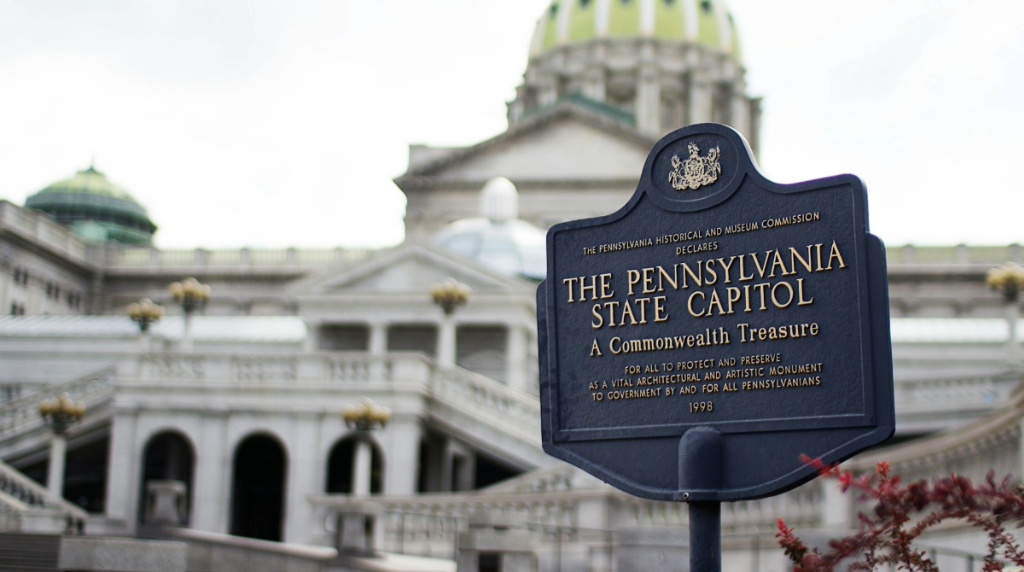PA iGaming Surges 31% in April; Poker Expansion and Tax Debates Grow
Pennsylvania iGaming number once again steal the show, while brick-and-mortar revenue is flat.

Pennsylvania Gaming Revenue totaled over half a billion dollars in April. © Katherine McAdoo, Unsplash
Key Facts:
- Pennsylvania iGaming Revenue up 31% over last April
- Online Slots were up 34.5%, Table Games up 24%
- Sports Book revenue was flat at $42 million
- Land based casino revenue declined just over1%
The Keystone State posted impressive numbers. While the $558 million was only good for the second-best month on record for total casino revenue, it was still up almost 11% over last April.
iGaming did all of the heavy lifting with an impressive $238 million in total revenue, with Poker contributing $2.3 million, Table Games kicking in $56 million, and online slots carrying the bulk of the load at $160 million. Overall, online slot revenue grew by more than 34% YOY, and tables climbed 24%.
Poker numbers were slightly down and made up just a rounding error currently of total online gaming revenue. Still, Pennsylvania did enter into the Multi-State Internet Gaming Agreement in the last few days of April.
This compact allows gaming on certain pooled games like Poker across state lines. The immediate impact will be that BetMGM will allow Poker players in Michigan and New Jersey to join Pennsylvanians in online poker games with proceeds divided up.
Other online poker operators will likely soon also allow interstate play, and other signatories of the MSIGA, like Nevada, Delaware, and West Virginia, may soon have their poker players added into the mix.
But it remains to be seen if this will mean just a few million more in online poker revenue or if they find success like that in the early 2000s, when more liquidity, larger tournament prize pools, and increased media coverage sparked rising consumer interest in the sport.
Sportsbook Struggles
Mixed news in Pennsylvania sportsbooks left many operators a bit uneasy. Total sports wagers made were up 10% year over year and came in at a very healthy $711 million, which, considering there are no football or college basketball games in April, is very respectable.
But the almost year-long struggle with low hold and “player-friendly outcomes” continues with a hold percentage under 6%, which is abysmal. For the last six months, the sports books have shrugged off these disappointing results as an aberration.
However, the results, mainly staying in the mid-single digits through the Fall, right up through the NFL playoffs and then March Madness, and now into the start of Major League Baseball, have certainly been drawing increasing levels of concern from stock analysts and operators alike. This is far from an isolated Pennsylvania problem, and it persists across the sports betting industry.
The rise in handle did mask some of the pain of the 5.9% hold, and overall revenue was only off 3% to $42 million.
Pennsylvania Land-Based Casinos Stagnant
Retail land-based gaming was down 1% year over year, but this hid some disparities between tables and slots. Tables rose as casinos have seen a younger demographic more interested in the social aspects of gaming finally appear on the casino floor. Slot revenue slid 1.2%.
Pennsylvania publishes an annual report that lays out a lot of demographic information about online and offline gamblers, or the largest group, which it refers to as mixed-mode gamblers. We can see the average age of land-based gamblers decreasing over time.
This only makes sense as the average age for land-based gamblers now stands at 53, while online only gamblers are on average more than twenty years younger. However, whether this trend towards land-based tabletop games by a younger demographic remains to be seen.
Harrisburg Eyes Grey Market Taxes
Pennsylvania does not lack gambling options, and one of the staggering numbers masked by that eye-watering $558 million in revenue is that the state could have done much better.
There are more than 70,000 grey market “skill” games that play just like slots in almost every truck stop, gas station, bar, and restaurant in the state.
These machines are currently untaxed and unregulated and exist in a sort of legal limbo, waiting for the courts to figure it all out.
In the meantime, the Governor’s office believes that taxing these machines at a rate even slightly less than the 54% it taxes current slot machine revenue would produce another $200 to $300 million for the state.
Add that to the $234 million that the state raked in April with its current tax structure, and you see the potential for five to six billion a year in tax revenue from all forms of gaming. That number is likely to catch the attention of other states like Ohio and New York, both of whom are considering gaming expansion, including iGaming.

 Barn Busters Slot Preview by Play’n GO
Barn Busters Slot Preview by Play’n GO
 US Gambling Tax Shift May Force Erik Seidel to Reduce Poker Schedule
US Gambling Tax Shift May Force Erik Seidel to Reduce Poker Schedule
 Play’n GO Released Tome of Madness
Play’n GO Released Tome of Madness
 Player Sues Aria Casino Over Disputed $75,000 Markers
Player Sues Aria Casino Over Disputed $75,000 Markers